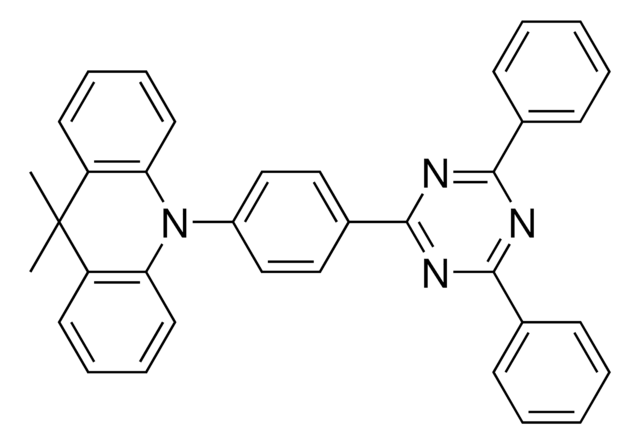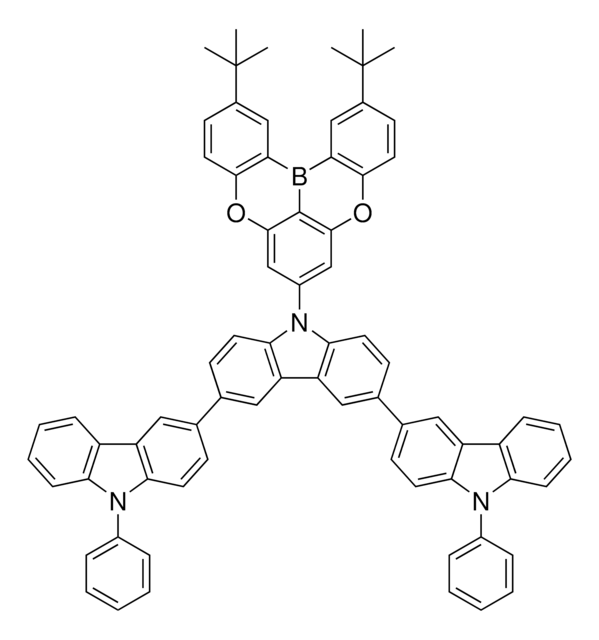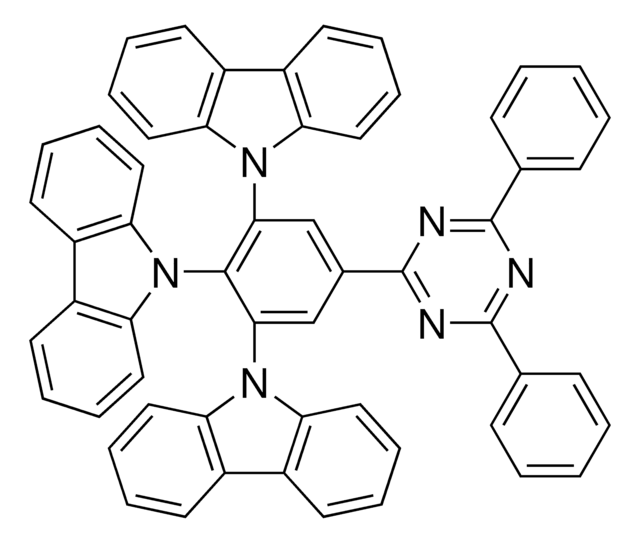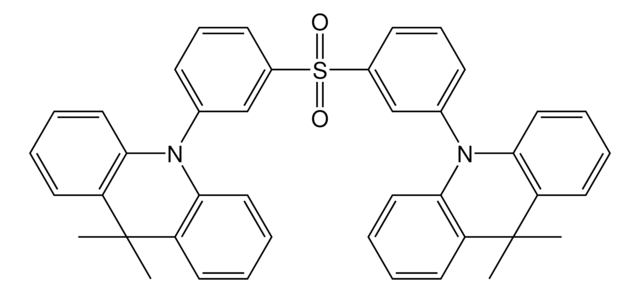932159
t-DABNA
≥99% (HPLC)
Synonym(s):
2,12-Di-tert-butyl-5,9-bis(4-(tert-butyl)phenyl)-5,9-dihydro-5,9-diaza-13b-boranaphtho[3,2,1-de]anthracene
About This Item
Recommended Products
grade
sublimed grade
Quality Level
Assay
≥99% (HPLC)
band gap
2.7 eV, HOMO-LUMO gap
energy gap
0.17 eV, delta EST
transition temp
transition temp 418.7 °C (Td by TGA)
solubility
methylene chloride: soluble
λmax
445 nm in dichloromethane
Orbital energy
HOMO -5.72 eV
LUMO -3.02 eV
Application
Storage Class Code
11 - Combustible Solids
WGK
WGK 3
Flash Point(F)
Not applicable
Flash Point(C)
Not applicable
Certificates of Analysis (COA)
Search for Certificates of Analysis (COA) by entering the products Lot/Batch Number. Lot and Batch Numbers can be found on a product’s label following the words ‘Lot’ or ‘Batch’.
Already Own This Product?
Find documentation for the products that you have recently purchased in the Document Library.
Our team of scientists has experience in all areas of research including Life Science, Material Science, Chemical Synthesis, Chromatography, Analytical and many others.
Contact Technical Service



